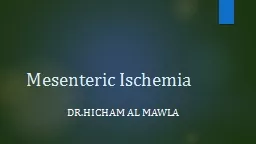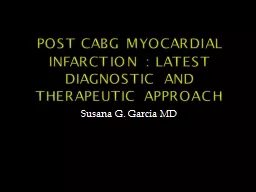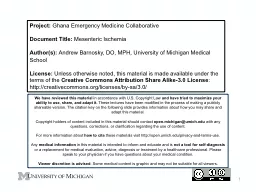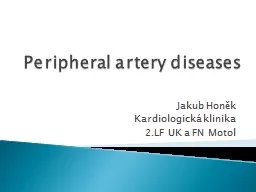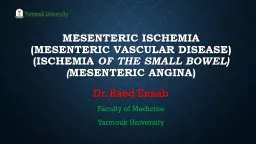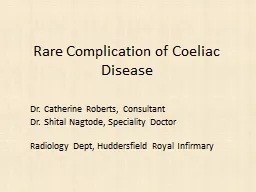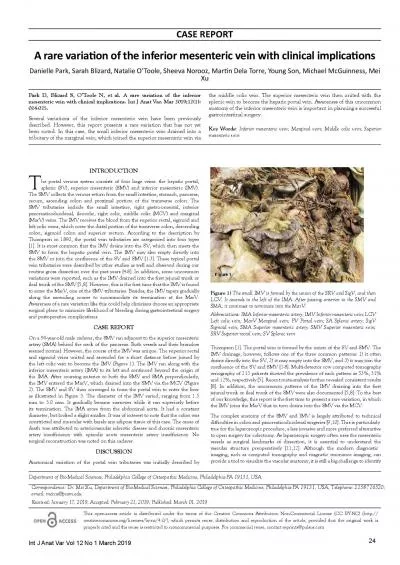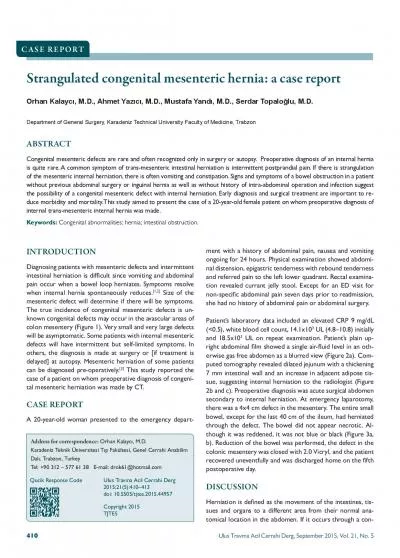PPT-Mesenteric Ischemia
Author : ellena-manuel | Published Date : 2020-04-04
Drhicham al mawla Introduction Mesenteric ischemia is a frequently lethal condition resulting from critically reduced perfusion to the gastrointestinal tract Acute
Presentation Embed Code
Download Presentation
Download Presentation The PPT/PDF document " Mesenteric Ischemia " is the property of its rightful owner. Permission is granted to download and print the materials on this website for personal, non-commercial use only, and to display it on your personal computer provided you do not modify the materials and that you retain all copyright notices contained in the materials. By downloading content from our website, you accept the terms of this agreement.
Mesenteric Ischemia : Transcript
Download Rules Of Document
" Mesenteric Ischemia "The content belongs to its owner. You may download and print it for personal use, without modification, and keep all copyright notices. By downloading, you agree to these terms.
Related Documents

